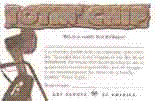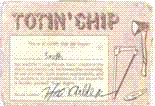
Objective: By the end of these sessions you should be able to:
q Name the parts of the ax and pass an ax correctly.
q Know how to sharpen an ax.
q Know how to setup an ax yard correctly.
q Know how to use a knife, take care of it properly and sharpen a knife.
q Use and carry a saw properly.
Location To be done outside if possible.
Materials Axe, hatchet, sheath, rope, Knives (pocketknives, Lock blades), Collapsible saw, sharpening file, sharpening stone.
The Ax.
The Ax has a long and colorful history in America’s forests.
Today, axes can be used to split firewood, clear fallen trees from backcountry trails, and complete conservation projects on pathways and in campgrounds.
Parts of the ax. (Go over the parts of the ax through sessions for repetitions)
Passing the
ax.
The proper way is to pass the ax along the side of the body with the bit facing out and never across the body. If the passer passes the ax with his right hand then the receiver will take the ax with his left hand and vice versa.
What do you say when receiving an ax? “Thank you” – It lets the passer know you have control of the ax.
Important
Notes:
q Keep heavy end (head) down.
q Don’t pass across the body.
q Must say “Thank you”.
q After have ax Bit to the side.
q An ax should never be waived in the air.
q Held still when being carried.
Activity:
Get in a circle and pass the ax around. Once the ax has been passed to someone they must show the correct way to hold the ax. (If large group divide group in two and have Instructor take a group to run activity.)
Some ideas of passing the ax incorrectly is:
q Passing the ax across your bodies.
q Pass with ax bit facing you or the scout.
q Pass the ax with the head wrong side up.
q Rope Off the area.
q Hold ax by head and move in a circle so you know nothing is around you to get in the way of swinging ax.
q Hold ax above you to make sure there are no low branches to caught ax while chopping.
q If someone is in ax yard already, ask permission before you enter.
q Scouts must be 10 feet away before you can chop.
q Wear long pants and leather boots.
What is wrong with wearing sandals or tennis shoes when chopping wood?
If the ax slips then the sandals and tennis shoes provide no protection for feet while leather boots do provide some protection.
Have the patrol set up an ax yard and then comment on good points and bad points of their ax yard.
Clamp ax on bench or table. Or position between a log and stopper so head is secure.
Use a file and start at one end and move the file down and across the bit.
Because of its size and the way in which it is used, an ax can be more dangerous than other wood tools. Remove the sheath only when you are prepared to use the ax correctly, and then follow this checklist:
q Safe tool.
q Safe shoes.
q Safe working area.
q Safe technique.
q Safe carrying.
q Safe handling
q Safe storage.
Pocketknives -
Locking knives.

Ever need to cut a rope.
Open a can of food.
Whittle a tent stake.
Slice a biscuit.
Punch a hole in a belt.
Want to tighten a screw on a pack frame.
Make wood shavings to start a fire.
Trim a bandage.
Small knives are better for young scouts because they are easier to control.
Serrated blades stay sharp but become hard to sharpen.
Stainless steel knives are good because they will not rust.
A folding blade knife should always be passed closed and never across a person.
A fixed blade should be passed with the person passing the knife holding the blade (dull end touching palm of hand).
Scouts should only carry a folding blade – While there is no official national rule against carrying a fix blade most Boy Scout camps does have a policy of no fixes blades. Older Scouts might remember when Boy Scouts sold fixed blade knives which had a four-inch blade. Many scouts decided they wanted bigger knives so they started to bring seven and eight inch knives. In the interest of safety scout camps forbid them. In most cases only a small knife is needed.
Troop
152 does not allow Fixed knives.
Sharpening a
Knife
Sharpen your knife with a whetstone. Most whetstones are made of granite or other material harder than knife metal. Some experts put water on the stone while they sharpening, some use light oil, and others keep the stone dry. The choice depends upon the kind of stone as well as individual preference.
q Do keep the blade closed except when you are using them.
q Do cut away from yourself.
q Do close the blade before you pass a knife to someone else.
q Do keep your knife sharp and clean. A sharp blade is easier to control than a dull one.
q Do obey any school regulations that prohibit carrying knives on school property.
v Don’t carry a knife with the blade open.
v Don’t throw a knife.
v Don’t cut toward yourself. If the blade slips, you could be insured.
v Don’t strike a knife with another tool or pry with the point of a cutting blade. The knife could bend or break.
Note: The Boy Scouts of America does not encourage the use of large sheath knives. They are heavy, awkward to carry, and unnecessary for most camp chores.


A camp saw is the right tool for most outdoor woodcutting. The blades of folding saws close into their handles, much like the blades of pocketknives. Bow saws have curved metal frames that hold their blades in place.
When cutting firewood, brace the piece of wood against a chopping block, sawhorse, or other support. Use long, smooth strokes and let the weight of the saw pull the blade into the wood.
Clearing branches and brush from a hiking trail is a conservation project you might do with a patrol or troop. To saw a branch from a tree, make an undercut first, and then saw from the top down. The undercut prevents the falling branch from stripping bark off the trunk. A clean cut to the trunk won’t leave an unsightly “hat Rack” that might snag the clothing of hikers. Cut saplings level with the ground so that there are no stumps to trip over.
Treat every saw with the same respect you give your pocketknife. Close folding saws when they are not in use and store them in a tent or under a dining fly.
Protect the blade of a bow saw with a sheath made from a piece of an old garden hose cut to the length of the blade. Cut a slit along the length of the blade, and hold it in place with duct tape or cord.
The teeth on saw blades are set – bent so that they cut two thin groves in the wood and then rake out the shavings in between. Even with the best care, the teeth will slowly lose their set and will bind in the wood. Bow saw blades are replaceable and are not very expensive. Take along a spare if you will have a lot of cutting to do.
q Do sheath a saw whenever it is not in use.
q Do carry a saw with the blade turned away from your body.
q Do replace blades when they become dull. Sharp saws are easier to use and control.
q Do use care when passing a saw to another person.
q Do wear gloves and protective eyewear.
v Don’t cut any trees, alive or dead, without permission.
v Don’t allow the saw’s blade to cut into the ground. Soil and rocks will quickly dull the teeth.
v Don’t leave a saw lying around camp.
TOTIN’ CHIP
ü
Read
and understand wood tool use and safety rules from the Boy Scout Handbook.
ü
Demonstrate
proper handling, care, and use of the pocketknife, ax, and saw.
ü
Use
the knife, ax, and saw as tools, not playthings. Use them only when you are
willing to give them your full attention.
ü
Respect
all safety rules to protect others.
ü
Respect
property. Cut living and dead trees only with permission and with good reason.
ü
Subscribe
to the Outdoor Code.
Your
TOTIN’ CHIP card must be on your person when using a wood tool.
You
will loose a corner of your card when any adult leader observes a rule being
broken.
The
loss of all four corners, you will not be able to use wood tools until you
reapply for a new card.

